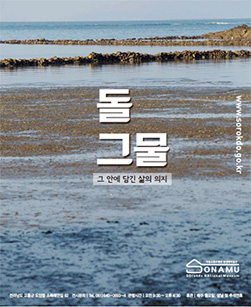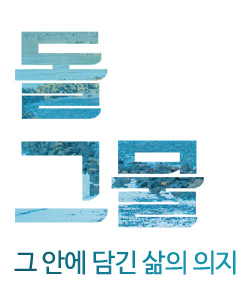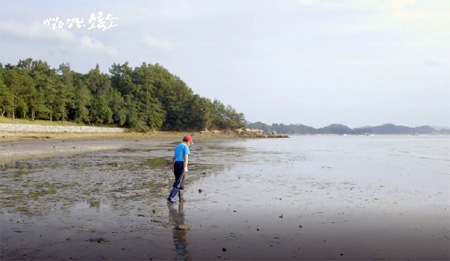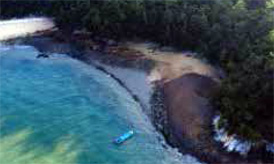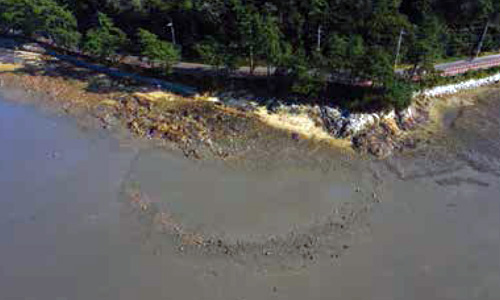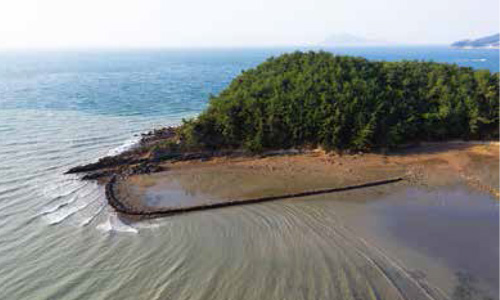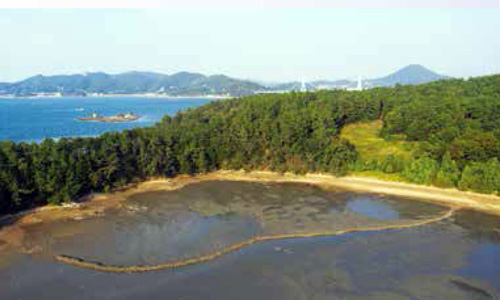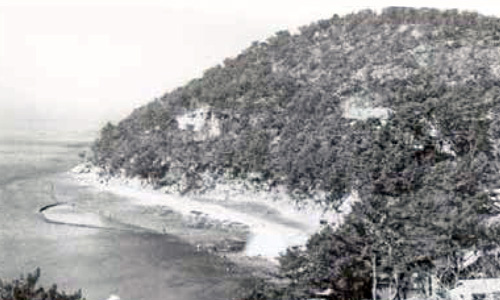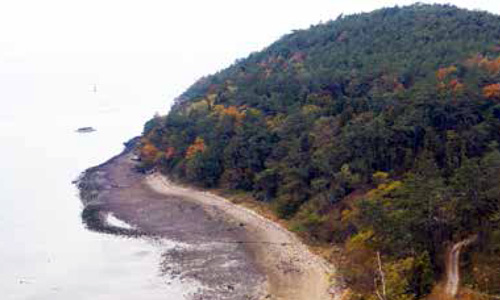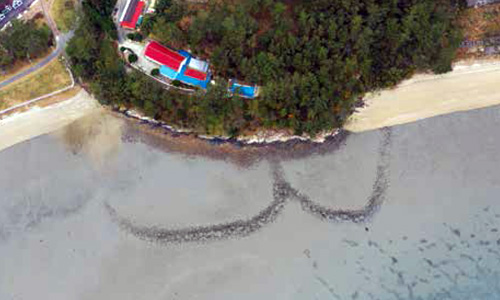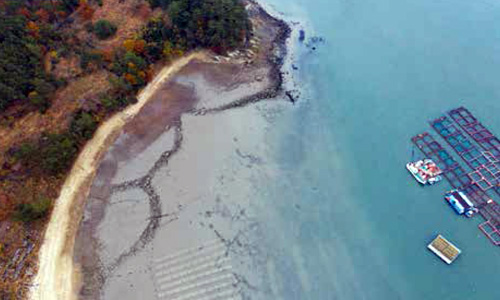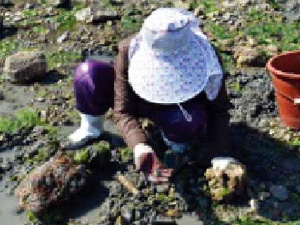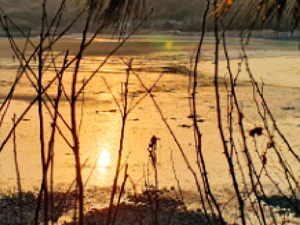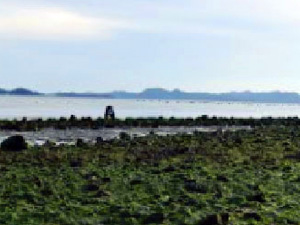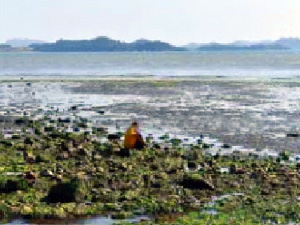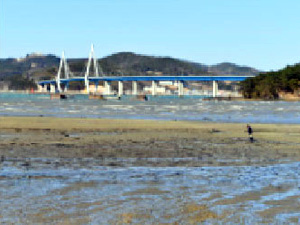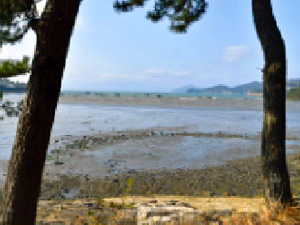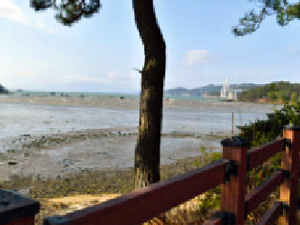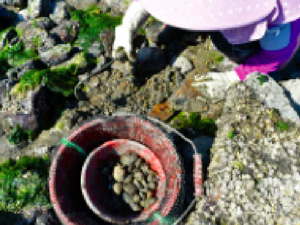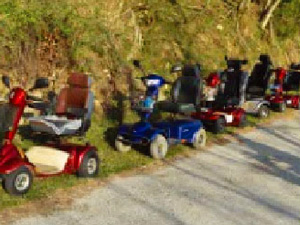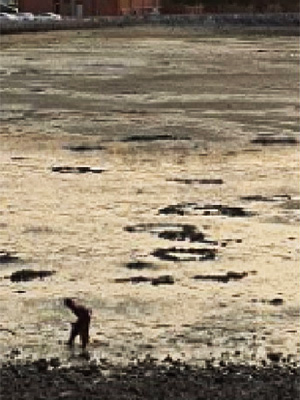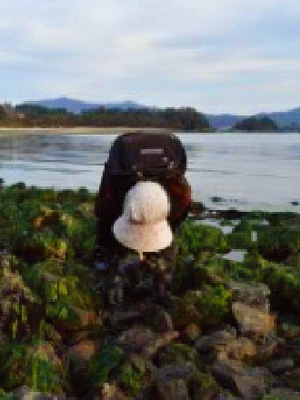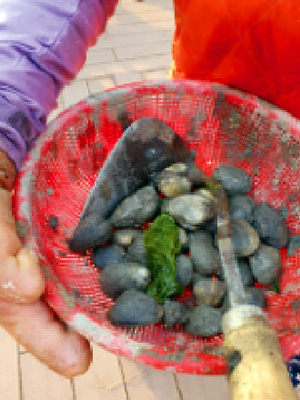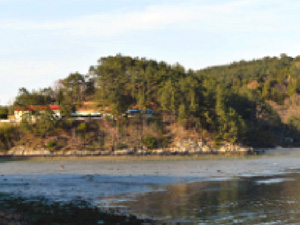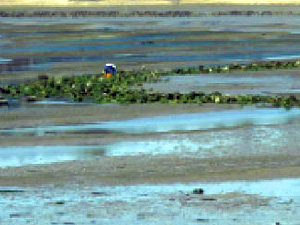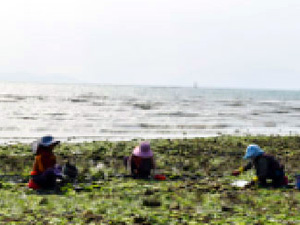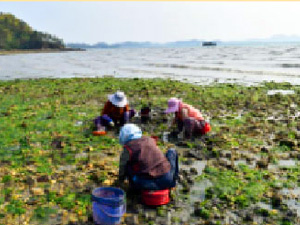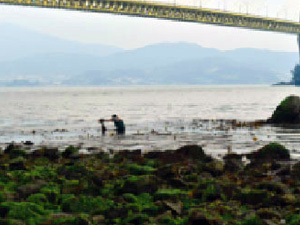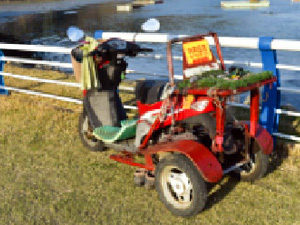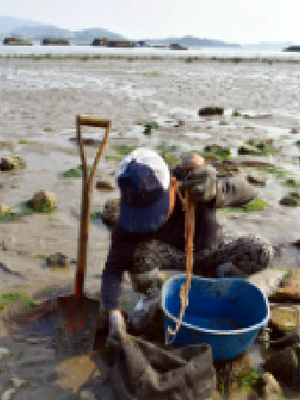본문시작
This temporary exhibition introduces 24 Doksals (fishing weirs made of stone) surrounding Sorokdo and explains the importance of the small island’s sea and fisheries heritage, which must be preserved for their historical and cultural significance.
*Doksal is an obstruction built from stone and placed in tidal waters of the sea to trap fish.
About Doksal
‘Doksal’ means a fishing weir. ‘Dok’ is a pure Korean word meaning stone and ’Sal’ means an arrow.
Then, is a fishing weir an arrow made of stone?
In the past, our ancestors had to go to nearby sea to catch fish due to the lack of advanced fishing techniques.
They built a fence in the sea so that fish that came upstream with the current can be trapped in it when the tidal water recedes.
At first, the fence was built by staking reed or bamboo sticks into the ground and then weaving them tightly
They considered the stick as an arrow catching fish and started to call it ‘Eosal’ meaning fish (eo) and an arrow (sal).
Eusal made of stone instead of tree branches was called ‘Doksal.’ ‘Doksal’ was called differently by region such as Dokbal, Ddookbal, or Seokbangryum.
Most people would not have dared to build it alone as large-scale Eusal was whopping 750 meters in length.
"夫漁箭功役甚大 非貧民所能爲也"
"“Eusal can hardly be managed by a poor individual as it covers a large area.”
(Jungjong Chronicles, The 4th year 5th month of Jungjong in the 39th year of the sexagenary cycle)
As stated in the Jungjong Chronicles, since it was exceedingly difficult for an individual to operate eosal alone, joint operation naturally came to the fore.
Fishing technologies and tools went from strength to strength as time went by. Instead of waiting for fish to get trapped in Doksal, people chose to aggressively go for the sea. Doksal went on the decline as a matter of course and only a pile of stones remains nowadays
Development of Doksal in Sorokdo...
There are 24 Doksals in Sorokdo.
They especially had not enough to eat. Most of the land, leaving only minimum communal areas, was cleared to cultivate various crops including greens but they were still not enough to feed people well.
They especially had not enough to eat. Most of the land, leaving only minimum communal areas, was cleared to cultivate various crops including greens but they were still not enough to feed people well.
People began to utilize the sea land. That is the beginning of Doksal.
To make Doksal, a group of like-minded people in a village of Sorokdo carried stones and built a fence by weaving them just the way they would cast a net on the sea floor.
People in the neighboring villages followed suit. Each village built two or three Doksals, resulting in 24 doksals in total.
Even during the time when Doksal lost momentum in the mainland, people in Sorokdo continued to build Doksal.
Most of people in Sorokdo are not fisherman. Some grew up with the typical sentiment of Sorokdo.
They never learned how to build Doksal and no one ever taught them. They overcame their lack of skills solely with their strong will and perseverance.
Doksals of Sorokdo lasted until 1980s but they were destroyed afterwards as there were no one to take care of them.
Inhabitants of Sorokdo still catch sea cucumbers, whistles, ark shells, and blue crabs from the destroyed Doksals.
Sorokdo Doksals are kept alive by the residents.
Inhabitants’ Story about Doksal
When the tide is in, fish flows into the steadfast Doksal.
The trapped fish flaps madly when the tide goes out.
There were so many fish caught like mullets, anchovies, squids, small octopuses and so much more.
An inhabitant of Namsaeng-ri
I was 17 and was not familiar with Sorokdo as I just moved in. When I went to the sea at low tide, the Doksal was teaming with fish. I put them in a huge bowl with joy and brought them home for meal. Later I learned that the Doksal was owned by someone. I started a family here and got along well with the owner’s family as well.
An inhabitant of Dongsaeng-ri
I would go there every day to catch crabs.
That was my job. It was my workplace.
Nam Jaekwon of Joongang-ri
24 Doksals
Doksals were mostly built around the Japanese Colonial period. Stones around the island were moved to build them. When the stone was too big, a group of people moved it together by using ropes and wooden sticks.
Doksals were placed at bays along the coast. It is known that Doksals were up and running until late 1980s in Sorokdo.
Doksals are scattered around the island including Joongang-ri, Sinsaeng-ri, Gubuk-ri, Seosaeng-ri, and Dongsaen-ri. A large Doksal and a small Doksal in Gubuk-ri are maintained in their original form while those in other villages only have their trace or were destroyed completely with only some stones lying down sparsely.
‘Bal’ is another name for Doksal in Sorokdo.
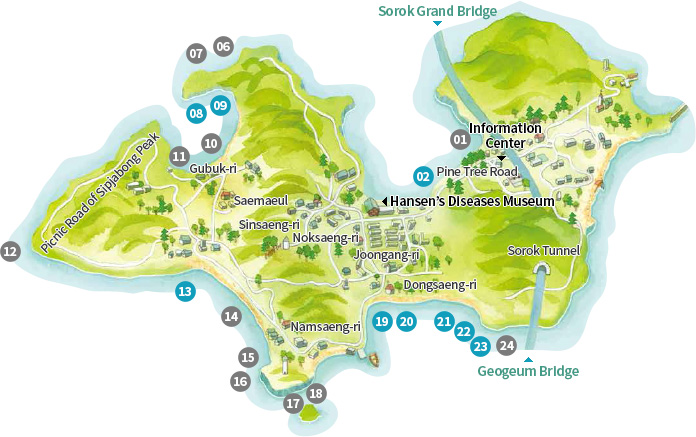
소록도 외곽 해안가에 24개의 독살이 자리잡고 있음 / 소록도안내소를 기준으로 반시계방향으로 설명함
- 1번 : 소록대교를 따라 소록도안내소 입구 뒤 중앙리 소나무숲길 초입 해안가
- 2번 : 소나무숲길이 끝나는 지점 중앙리 해안가
- 3번, 4번 : 신생리길 해안도로 초입지점의 해안가
- 5번 : 신생리길 해안도로 중간지점의 해안가
- 6번, 7번 : 신생리길 해안도로 끝지점을 지나 소록도 최북단 지점의 해안가
- 8번, 9번 : 6번, 7번 독살의 반대쪽으로 구북리 초입지점의 해안가
- 10번, 11번 : 구북리사무소 인근 해안가
- 12번 : 십자봉 소풍길을 따라 소록도 최서단 해안가
- 13번 : 서생리 자혜의원 인근 해안가
- 14번 : 자혜의원과 남생리사무소 중간지점 해안가
- 15번, 16번 : 남생리사무소 기준 서쪽방향 해안가
- 17번, 18번 : 남생리사무소 기준 동쪽방향 해안가
- 19번, 20번 : 동생리사무소, 동성교회 앞 해안가
- 21번, 22번, 23번 : 동생리 1구 양지회관길 끝지점 내 마을 끝 해안가
- 24번 : 거금대교 기준 서해방향 해안가
-
-
08Small Doksal in Gubok-ri
-
09Large Doksal in Gubok-ri
-
13#2 Doksal in Seosaeng-ri (1960s)
-
13#2 Doksal in Seosaeng-ri (present)
-
1920Large Doksal and small Doksal in Dongsaeng-ri
-
212223 #1, 2, and 3 Doksals in Dongsaeng-ri 1-gu
Village Landscape
Sinsaeng-ri, Seosaeng-ri, Joongang-ri
Gubuk-ri, Namsaeng-ri, Dongsaeng-ri
본문종료
